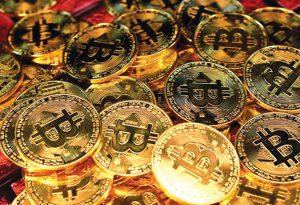Bloomberg
A rally in Bitcoin took the token to the cusp of scaling $25,000 for the first time since August amid broad gains in crypto markets
as investors shook off concerns about a US regulatory clampdown.
The largest digital asset rises as much as 3% on Thursday and was trading at $24,620 as of 8:15 am in London. Smaller tokens such as Ether, Cardano and Avalanche also pushed higher.
A US crackdown on certain crypto products as well as a New York regulator’s move to end issuance of BUSD, the third-largest stablecoin, buffeted digital assets at the start of the week. But they have since extended a rebound from last year’s rout, including a near-50% year-to-date climb in Bitcoin.
The momentum in crypto is likely making speculators close out bearish bets, further propelling the rally, said Cici Lu, founder of Venn Link Partners, a blockchain adviser.
“People forget the free float of Bitcoin can be limited at times and when shorts get squeezed the price just pops,†she said.
Some $64.5 million of short positions in Bitcoin were liquidated on January 15, the most in about a month, according to data from Coinglass. The liquidations came alongside a near-9% jump in the token on February 15.
Crypto prices are climbing as global stocks advance. The latter have been boosted by bets that Federal Reserve interest-rate hikes can quell inflation without driving the US into a recession.
The risk for the sanguine mood in global markets is that investors are too complacent about how high rates have to go, as prolonged monetary tightening could damp demand for a variety of assets.
“It seems some of this is because BUSD, the Binance stablecoin that the SEC has issued an order against, has not appeared to have issues with redemptions, quelling potential fears,†said Katie Talati, director of research at Arca.
“A major NFT marketplace, Blur, airdropped its token to thousands of users which pushed gas prices on Ethereum up as users rushed to claim their airdrop,†she said. “The increase in gas prices has further decreased Ether supply which is currently net deflationary, a continuation of a trend we have seen since January when the market
reversed direction.â€
 The Gulf Time Newspaper One of the finest business newspapers in the UAE brought to you by our professional writers and editors.
The Gulf Time Newspaper One of the finest business newspapers in the UAE brought to you by our professional writers and editors.
